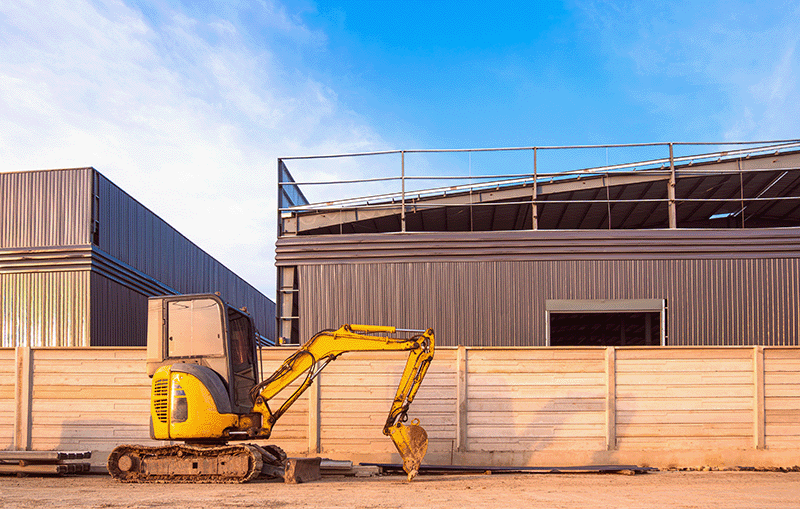Partner with Downstream

When it comes to versatile, compact equipment that can handle tight job sites and demanding tasks, mini excavators punch well above their weight. These compact diggers are a mainstay across residential, commercial, and light industrial projects — and for good reason. Whether you’re trenching utilities, grading land, or navigating sensitive indoor demolition jobs, a mini excavator offers control, capability, and efficiency in one highly maneuverable package. In this guide, we’ll break down what you need to know about mini excavators — including common sizes, jobsite applications, key specs to look for, and tips for choosing the right machine.

A mini excavator is a smaller version of a standard hydraulic excavator, typically weighing between 2,000 and 20,000 pounds. It features a boom, dipper (or arm), and a bucket — just like larger excavators — but in a much more compact frame. Mini excavators are commonly used for tasks that require precision digging or work in areas where space is limited.
Some models come with retractable undercarriages, zero-tail swing designs, and optional attachments like breakers, augers, and grading buckets, making them even more adaptable to a wide variety of jobs.
Because of their small footprint and precise controls, mini excavators are ideal for:
According to ForConstructionPros, mini excavators are becoming increasingly popular for urban jobs because of their ability to reduce the need for hand labor while staying compact enough to work in confined areas.
The term “mini” is relative — not all mini excavators are created equal. Here’s a quick breakdown of common size classes:
Choosing the right size is critical — not just for performance, but also for access, transportation, and jobsite conditions. Bobcat’s guide to choosing the right compact excavator is a great resource when considering different sizing tiers and attachment compatibility.

Zero tail swing designs allow the machine to rotate completely within its own track width — making it perfect for jobs in confined or urban spaces where any overhang could damage structures or create hazards.
Retractable undercarriages make it possible to squeeze through narrow access points like gates, doorways, or between buildings. Once in place, the tracks can extend again for more stability while working.
Quick couplers let operators swap attachments in a matter of minutes without manual tools or pins. This feature increases efficiency, especially on jobs that require multiple tools throughout the day.
Mini excavators with high-performance hydraulic systems deliver more digging power, smoother operation, and improved control — especially when using powered attachments like thumbs or augers.
Fully enclosed cabs offer climate control, protection from the elements, and quieter operation. Open canopy models are lighter, often less expensive, and provide greater visibility in outdoor conditions.
Electric or hybrid mini excavators are ideal for indoor demolition or low-emission job sites. Even traditional diesel models are increasingly Tier 4 compliant, helping reduce environmental impact and comply with local regulations.
Not every excavation job requires a 40,000-lb. machine. In many cases, mini excavators are the better — or only — option. Consider a mini excavator when:
Mini excavators are also faster to set up and tear down, reducing idle time and maximizing production on short-duration jobs.
When you need a mini excavator, time is usually of the essence — and Downstream makes it simple to find the right machine in your area, fast. Our marketplace connects you with vetted local suppliers offering everything from 2,000-lb. mini excavators to 18,000-lb. cabbed models with protection and advanced attachments.
Whether you’re trenching utilities in a downtown retrofit or prepping a pad in a backyard, you can compare rates, availability, and specs in just a few clicks.
Explore mini excavator rentals now at trydownstream.com
Mini excavators are a staple for contractors, landscapers, and utility crews for good reason. Their compact size, adaptable features, and performance make them indispensable for projects where space and precision matter. Whether you’re choosing a 3,000-lb. hybrid unit for indoor work or a 12,000-lb. digger for grading out a residential lot, the right mini excavator can dramatically improve productivity and jobsite safety.
When you’re ready to rent, trust Downstream to make the process easy — no phone tag, no guesswork, just the right machine at the right price.
-min.webp)
Quis nostrud exercitation ullamco laboris nisi ut aliquip ex ea commodo consequat. Duis aute irure dolor in voluptate.
